Developing sustainable livelihoods based on internal resources
In An Hai commune, Ninh Phuoc district, Ninh Thuan province, Tuan Tu village is quite famous for being a village of pure Cham ethnic people. The village has an asparagus growing cooperative that has been awarded a Certificate of Merit by the Ministry of Agriculture and Rural Development for its effective activities in implementing the National Assembly's Resolution and the Prime Minister's Decision on developing 15,000 agricultural cooperatives and cooperative unions.
Tuan Tu village has two “specialties”: sunshine and wind, 65% of the area is poor sandy soil. Mr. Kieu Minh Tien - a prestigious person in the village recalls, in the past, people only knew how to grow peanuts, carrots... In years when the products had good prices, life was comfortable. In years when the prices were not good, life was precarious.
With the desire to help Tuan Tu people effectively convert crops to have a stable income, the Department of Agriculture and Rural Development of Ninh Thuan province tested the introduction of green asparagus into the village's land. Mr. Tien was the pioneer in responding.
Because of the scarcity of land for production and the difficult life, not many people dare to “bet” on new crops. Therefore, if pioneers like Mr. Tien are successful, their products will be very valuable.
Bet successful. Green asparagus grows well in Mr. Tien’s garden. The selling price is up to 90,000 VND/kg (double the current price), helping Mr. Tien raise 4 children to study properly.
Green asparagus is known as the nutritional “emperor” of vegetables and is therefore very popular. The economic value that green asparagus brings along with convenient consumption has urged the Cham people of Tuan Tu village to unite and establish a cooperative.
This idea received support and assistance from all levels, sectors in the province, district, commune and even foreign non-governmental organizations, through assisting people in installing irrigation systems, buying seedlings, completing procedures for certification to meet VietGap standards; developing brand identity, packaging labels, registering copyright of cooperative logos...
Currently, the cooperative is cooperating with an organic agricultural farm to purchase products for members, with a purchase price of 50,000 VND/kg. Mr. Lo Trung Tai - Deputy Director of the cooperative compared, 1 kg of green asparagus is worth 10 kg of rice. Every day, people in the village have money. Small growers harvest 10-15 kg/day; large growers harvest 30-50 kg/day. Every day, the cooperative buys nearly 200 kg of asparagus for its members. Every year, the Cham people of Tuan Tu village have a revenue of nearly 4 billion VND. Almost 500 households in the village have built big and beautiful houses thanks to green asparagus.
Based on organic pepper plants, the story of Hoang Nguyen Trade and Service Cooperative, Dak Song district, Dak Nong province is an interesting example for people in remote areas who are developing thanks to local agricultural products.
Established and put into operation in 2018, much later than other cooperatives, 41 members of Hoang Nguyen chose the solution of focusing on standards and quality certification to affirm product value and create trust with customers.
The cooperative invested over 800 million VND to obtain 3 organic product certificates according to the standards of the United States, Europe, and Japan and export products to these markets. For the domestic market, products are OCOP certified.
Ms. Tran Thi Thu, Director of Hoang Nguyen Trade and Service Cooperative, said that thanks to investing in quality, the Cooperative always sells products at high prices, ranging from 65 to 80 million VND/ton, while households only sell for about 37 million VND/ton. Each year, the Cooperative exports hundreds of tons of organic pepper.
The story of the Ngan Huong Cooperative Group (THT) in Bac Kan province is a testament to the development of sustainable livelihoods based on the available resources in the homeland and family traditions. The Tay people account for more than 50% of the population of Bac Kan province and they have creative ways to develop the economy based on local products and long-standing traditions of the nation.
Ms. Nguyen Thi Luan is the leader of the 4-member Ngan Huong Cooperative, which has an “aunt-niece” relationship and invests capital together to do business. Ms. Luan studied Oriental medicine, so she knows that traditional remedies of ethnic minorities not only bring health benefits but are also a cultural beauty that needs to be preserved and promoted.
She came up with the idea of using traditional herbs from her homeland to turn them into medicines. THT’s main products are traditional Tay medicinal herbs, star anise, cardamom…. Every day, THT buys about 100-200 kg of medicinal herbs, which are processed into medicines to treat stomach diseases, kidney stones, hemorrhoids, fibroids, cysts and jaundice in children…
Patients used it, saw its effectiveness, and recommended others to buy it. The best-selling medicine is the one that cures kidney stones and stomach problems, Ms. Luan said simply.
Realizing that flower and herbal tea products are in great demand in the city, and that the consumer base is wider and more diverse, Ms. Luan plans to focus on promoting the production of tea and aromatic essential oils in the near future. She hopes that more people will join the cooperative, and that people will actively grow medicinal herbs to process into specialties of her hometown Bac Kan, bringing them to consumers nationwide.
That is Ms. Nguyen Thi Luan in Bac Kan province with the Traditional Oriental Medicine Production Group. As for Ms. H'Binh, a M'Nong ethnic, Head of the Dak Nia Brocade Weaving Group, Gia Nghia city, Dak Nong province, she started with the traditional brocade weaving profession because she is always proud to be born and raised in a family with a tradition of brocade weaving. Her mother is an artisan, with more than 50 years of experience with the loom.
Following her mother's footsteps and with a passion for brocade that had been in her blood since childhood, Ms. H'Binh decided to establish THT with the desire to preserve the traditional craft of her people.
Initially, the members of the group did not know how to weave but shared the desire to preserve the traditional beauty of the nation. Group leader H'Binh actively participated in training classes and became an artisan. Returning to her residence, she taught the craft to the members and together they created traditional brocade products such as shirts, skirts, blankets, etc.
Having products but how to bring them to consumers is always a big question for Ms. H'Binh. So instead of passively waiting, she takes advantage of social networks to find customers and sell products. Thanks to that, THT has maintained production, creating jobs for 10 M'nong ethnic women, with an income of about 6 million VND/person/month.
Affirmation of competence
The above successful cooperatives and cooperative groups represent 53% of the effectively operating cooperatives out of a total of nearly 12,000 cooperatives in ethnic minority and mountainous areas.
According to statistics of the Vietnam Cooperative Alliance, the average income of members and workers in the agricultural cooperative sector is from 0.7 - 1.5 million VND/person/month, and in the non-agricultural cooperative sector is from 1.8 - 3 million VND/person/month.
Some cooperatives are capable of creating jobs and bringing high income to members such as: Da K'nang Agricultural Production Cooperative, Lam Dong province, has 07 hectares of medicinal plants, 40 hectares of vegetables, tubers, fruits, creating jobs for 120 regular workers, mainly ethnic minorities, with an average income of 5.7 - 11 million VND/month; Evergrowth Agricultural Cooperative, Soc Trang province produces and trades raw fresh milk, attracting 2,949 members; creating regular jobs for more than 3,000 workers; average income of member households reaches over 8.3 million VND/month.
Nationwide, cooperatives, cooperative unions, cooperative groups and their members produce and supply to domestic and foreign markets a large volume and value of agricultural products, OCOP, transportation, credit and trade services...
The proportion of rice, pepper, vegetables and fruits produced by cooperatives, cooperative unions, cooperative groups and their members accounts for about 70% of the country's total output; the proportion of other agricultural products and aquatic products accounts for 25-30%; the proportion of OCOP product production accounts for 45%; the proportion of passenger and cargo transport services accounts for 29%; the proportion of retail sales of essential consumer goods accounts for 28%; the proportion of outstanding credit in rural areas accounts for 14%; agricultural cooperatives in border areas and fishing cooperatives also actively contribute to protecting the country's sovereignty.
The number of cooperatives in ethnic minority and mountainous areas currently accounts for 42.4% of the total number of cooperatives in the country, not to mention the 35 cooperative unions and 61,471 cooperative groups; of which there are more than 600 production cooperatives associated with value chains (accounting for 30% of the country). Thus, it can be affirmed that cooperatives, cooperative unions and cooperative groups in ethnic minority and mountainous areas have made very important contributions to the overall development achievements of the cooperative economic sector, contributing to macroeconomic stability, economic growth, ensuring social security, implementing progress and social justice, ensuring national defense and security./.
Lesson 2: The role of cooperative economy in ethnic minority and mountainous areas
Source link



![[Photo] Students of Binh Minh Primary School enjoy the full moon festival, receiving the joys of childhood](https://vphoto.vietnam.vn/thumb/1200x675/vietnam/resource/IMAGE/2025/10/3/8cf8abef22fe4471be400a818912cb85)
![[Photo] Prime Minister Pham Minh Chinh chairs meeting to deploy overcoming consequences of storm No. 10](https://vphoto.vietnam.vn/thumb/1200x675/vietnam/resource/IMAGE/2025/10/3/544f420dcc844463898fcbef46247d16)


















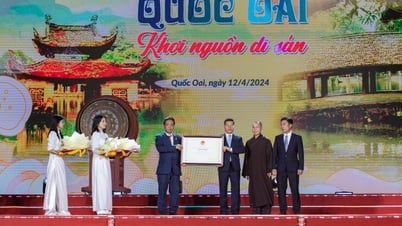

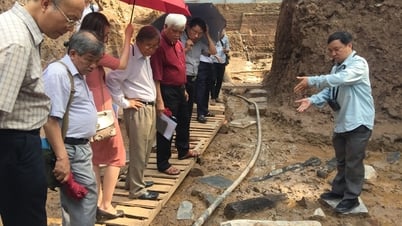
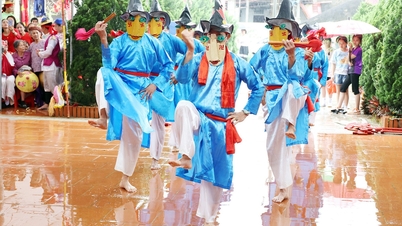


















































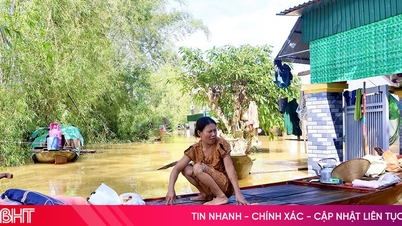





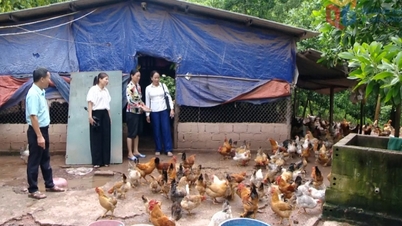

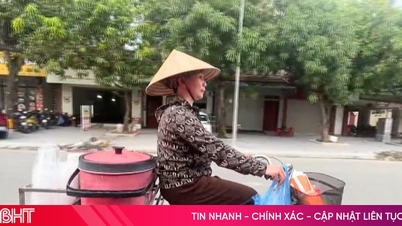












Comment (0)